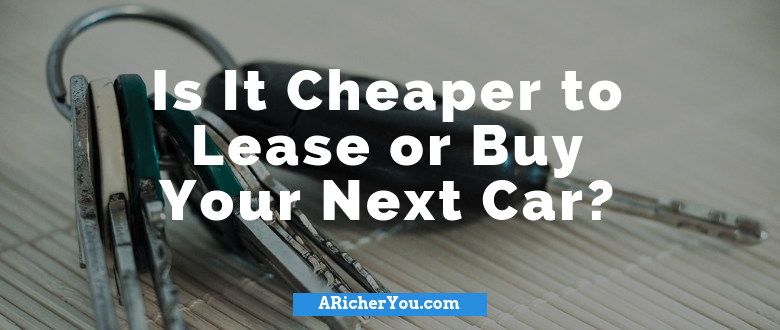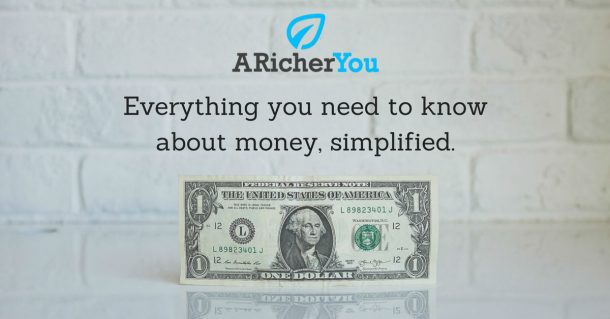I bought my first car for $500 from my friend’s brother. It shouldn’t have been a good idea. The interior panels were all hanging off, the wheels made a weird rattling sound and the engine used to whistle when you revved it too hard.
But that car kept going and going and going. It lasted five full years before I sold it on to someone for almost as much as I originally paid for it!
![]()
After paying just $500 for a car that lasted five years, there was no way I was going to lease my next car. It just didn’t make good financial sense.
Or so I thought.
As you’ll see in a little while, buying isn’t always cheaper and leasing can actually end up the better financial option.
Some quick definitions
Before we get started, let’s quickly define what counts as leasing and what counts as buying.
-
- Buying: Exchanging something to become the legal owner of something. This includes car finance methods like personal loans and hire purchase.
- Leasing: “[Using] a motor vehicle for a fixed period of time at an agreed amount of money for the lease. It is commonly offered by dealers as an alternative to vehicle purchase but is widely used by businesses as a method of acquiring (or having the use of) vehicles for business, without the usually needed cash outlay.” [Wikipedia]
Now, there’s one car finance method I want to mention specifically because it’s a sort of buying-leasing hybrid — personal contract purchase (PCP). With PCP, you essentially lease the car for a set period then have the option to purchase the car by paying a large balloon payment.
To keep things simple, I’m going to completely ignore PCP.
The real buying case
After selling my $500 workhorse, I decided to do the sensible thing and bought a three-year-old Ford Fiesta from a reputable dealer for about $9,000, which is roughly 65 percent of its list price. The price tag was maybe a bit on the high side but I wanted the reassurance that comes with dealing with a dealer rather than an individual.

And why did I buy rather than lease? Here’s Lou Carlozo’s take on pro-buying argument as explained in his article for Money Under 30:
“[W]e have to remind you that, financially, the best way to buy a car is to pay cash for something pre-owned to avoid paying both interest and off-the-lot depreciation.
“Another member of the Financial Literacy Commission, Clare Levison, notes that car payments will eventually end, whereas lease payments won’t until you turn in the car. “With buying, eventually you will have paid the car off and no longer have the expense of the monthly payment.””
I liked that idea. I paid $9,000 in cash for a three-year-old car in what seemed like great condition and that should have been the end of my outgoings.
But it wasn’t.
Almost to the day after crossing the three-month warranty mark, things started going wrong. And over the next three years, they just kept getting worse.
First the battery died without warning and then the water pump gave up. They were annoying repairs but didn’t cost a whole lot. A fault in the rear suspension was more costly as was a clutch replacement. New brake discs, spark plugs and a patched up radiator all added to the repair bill.
All in all, I spent another $6,000 on assorted repairs while I had that car and eventually sold it for just $4,250. Over the three years, it worked out to a net spend of $6,750.
![]()
Now, I’m not saying this is the typical case. In fact, it was pretty abnormal but it does illustrate that a lot of your car finances can come down to luck.
Next we’ll discuss how much I could have spent if I went with a fixed-price motoring option like leasing.
The hypothetical leasing case
As I mentioned, I had decided against leasing. I knew a lot of people who had leased their cars — some had had good experiences and others had had mixed experiences. What I didn’t like was the never-ending payment schedule and the fact you never actually owned the car.

However, while writing this article, I talked to various leasing experts who explained why they preferred leasing to buying.
Will Craig, CEO of LeaseFetcher, a car leasing comparison site, thinks that protection and peace of mind is a major reason why so many people are turning to this form of car finance.
“Buying isn’t all it’s cracked up to be, especially if you buy a used car. You’re not covered by the manufacturer so if anything goes wrong you can end up shelling out a lot of money. Leasing, on the other hand, is much more straightforward. You know exactly how much you’ll pay in each month.”
I went back and found a similar car to the Ford Fiesta that I bought outright and did some sums in Excel.
I think it would have cost me just $6,660 to lease the same car for the three-year period, which is $100 or so less than I paid to own it!
Obviously, that’s not always going to be the case. If I got lucky and found a super reliable car, I might have gone the three years with no repairs at all, making leasing the more expensive option. But with leasing I would have known exactly how much I was due to spend over the three years and would be able to budget for it.
So which is cheaper?
Even with all my bad luck, leasing was only marginally cheaper than buying. Generally speaking, leasing will be more expensive than buying. But that doesn't mean it's right for everyone.
Leasing gives you access to brand new cars at a fixed price — and you can upgrade every few years. On top of that, it’s as close to fixed-price motoring as you’re likely to find. If you lease your car, you don’t have to worry about depreciation, resale value or repair bills. All of those considerations are dumped off on the leasing broker.
As you evaluate your own situation and needs, you should be able to determine which option is best for you. Alternatively, you may decide the best choice is to avoid owning a car at all, using Uber and Lyft to get around.
Tom Butcher is a freelance writer who recently escaped the world of print journalism. He covers a wide range of topics, including finance, business and motoring. You can follow his (new) Twitter feed here.


